A common practice I see today is people maxing out their 401k plan contributions. One example is an individual who made $70,000 saying that he was putting 26% of his pay away into his retirement plan. Given that the yearly 401k limit is currently about $19,000 per year, I assume he’s maxing out his plan. If he does this for another 40 years, investing it all in stock index mutual funds, he’ll have about $4.5 M at retirement in today’s dollars. Pretty sweet, but does he really need $4.5 M at retirement if it means sacrificing that much between now and then? That’s enough to produce about $200,000 per year in income, almost three times as much as he’s making now while he’s working. Realistically, he’d be fine with about $1.5 M, which would give him $60,000 per year. Plenty of money if he doesn’t have the expenses associated with working a job and is no longer funding a 401k.
(Note, this site contains affiliate links. As an Amazon Associate I earn from qualifying purchases. When you click on an affiliate link and buy something, The Small Investor will get a small commission for the referral. You are charged nothing extra for the purchase. This helps keep The Small Investor going and free. I don’t recommend any products I do not fully support. If you would like to help but don’t see anything you need, feel free to visit Amazon through this link and buy whatever you wish. The Small Investor will get a small commission when you do, again at no cost to you.)
In addition to spending 40 years scrimping and saving to have lots of money when there are a lot of things you can no longer enjoy with the money, putting too big a percentage away for retirement can actually end up costing you a lot more money over your lifetime. This is because you don’t have the cash needed to make good financial decisions, like buying used cars for cash, so you end up paying out a lot of your paycheck for interest and depreciation instead of using it for stuff you want or need. Sometimes it is better to save less for far into the future so that you have the money you need now, or five years from now when the roof needs to be replaced.
401k contribution limits (and IRA contribution limits) shouldn’t even be considered when deciding how much to put away for retirement. They’re there to keep high earning individuals from sheltering most of their income from taxes. With no limit, someone making $500,000 per year could live on $50,000, paying about $7000 in taxes each year, then shelter the other $450,000 each year in a 401k until retirement. Since the government wants their money sooner than that, they created contribution limits and set them high enough that most people with middle-class incomes would never hit them. But then middle-class people started seeing the limits as a goal for their contributions, rather than as a ceiling. Really, if you make less than $150,000 per year, you shouldn’t even know what the 401k maximums are.
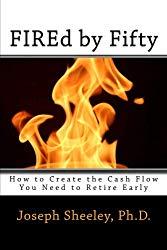
FIREd by Fifty: How to Create the Cash Flow You Need to Retire Early
How much should you be putting into your 401k account?
Saving (or more precisely, investing) for retirement is something everyone should do after taking care of basic necessities (food, shelter, clothing, utilities, fuel, medical, kid’s education). If you wish to retire, you need to have put enough “food on the shelf” to cover you for all of the years when you are not working and “growing food” that year. You need to be taking a little of the excess you create each year (and up your game if you aren’t making enough to have any excess) to help you make it though the long hard winter.
Unless you have an alternative plan, like having lots of kids and having a couple of the successful ones take care of your living expenses when you are ready to quit working, you’ll need to have a big nest egg to make it through. Without it, you’ll need to keep working. Unfortunately, sometimes things happen like a lay-off at 55 or an injury that force you to retire even if you don’t have enough money. Working until you die isn’t always an option.
But you don’t need to have 10 times what you need stuck in a retirement account, untouchable until you reach retirement age. That will limit your options and actually make you end up wasting money along the way. You will also end up paying out a bunch of money in taxes in retirement when you’re forced to take big required minimum distributions, putting you into a high tax bracket, even though you don’t need that much money. Or, you may die earlier than you expect and have missed out on using a big chunk of the money you’ve accumulated. Sure, you may get a tax break by putting it into a retirement account, but it may end up costing you more in the end.
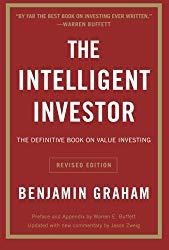
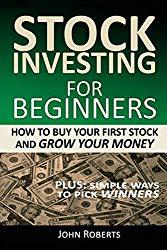
To find out how much you need, take what you expect to need per year in retirement in today’s dollars and multiply by 25. For example, if you could live comfortably on $60,000 per year, you’d need about $1.5 M in a retirement account. Maybe throw in another $400,000 to cover medical expenses, so you’d need just shy of $2 M.
To then figure out how much you need to be putting away in a retirement account each month, go to an investment calculator, plug in how much you’ve got in your 401k already, put 7% in as the rate of return, then adjust the monthly payment until you reach your goal at your retirement age. For example, if someone had $10,000 saved and needed $2 M in 35 years, he’d need to be putting about $700 per month, or $8400 per year into his 401k. If the company were matching, say $300 per month, he’d only need to be putting $400, or $4800 per month, away.

Why you shouldn’t overcontribute
So what does it hurt to put extra away? A little extra probably wouldn’t hurt. In fact, it will come in handy if your employer stops matching since then you’ll already have the cash flow needed to pick up the slack. It also makes sense to be contributing enough to get the full match that your employer provides. To not do so is to leave free money on the table. But putting a lot extra away can have a big negative effect on your finances and your financial security because it may mean that you won’t have enough money to cover expenses beyond the day-to-day.
For example, let’s say that Bob is maxing out his 401k account, leaving him with nothing extra each month. This may work fine as long as no extra expenses come up, but when the car breaks down, Bob breaks a leg, or Bob just takes a vacation, he reaches for the credit cards and starts accruing a credit balance. Maybe after a while he decides it is time to get a new car, but he doesn’t have any real savings outside of his 401k, so he gets a newer or brand new car with a car payment. Next, he needs a new air conditioner. Again, not having savings, he takes out a home equity loan and starts paying even more interest. Eventually, if the credit card and other debts get too large, he may end up taking money out of his 401k, incurring taxes and a penalty, to pay off some of the debt.
But just you’re now contributing less does not mean that you should be spending all of the money you’re now not contributing to your 401k. Instead, you should open a taxable brokerage or mutual fund account and start putting a good portion of the money you’re not sending into your 401k account into this account, investing it in index mutual funds as described in The Bogleheads’ Guide to Investing. To make sure you actually send the money, set up an autodraft from your checking account each month. That way it is all automated as it is with your 401k.
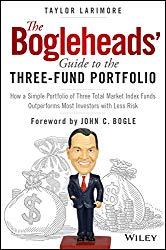
Let’s say that Larry does this, sending $400 per month into his 401k while sending $800 per month into a brokerage account using autodraft. After a year of doing this, depending on how his investments do, he might have $7000 to $12,000 in his investment account. After a couple of years, he might have $15,000 to $25,000 tucked away.
Then, after the second year, Larry decides he needs a new car. He shops a little and finds an 8-year old Toyota with 85,000 miles on it for $8,000 ($9000 with tax). He takes the money out of his portfolio, dropping it say to $10,000. Because he doesn’t have a car payment, he is able to continue to put $800 per month in his taxable portfolio and rebuild it. Within less than a year, he’s back to where he was. If there is a good market rise, it may be down only a few months.
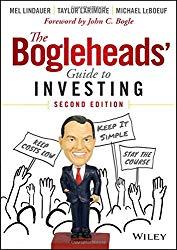
As Larry’s portfolio gets bigger, it starts growing on its own through appreciation. Eventually as it grows to $50,000, then $100,000, the amount that the portfolio generates in appreciation starts to exceed the contributions that Larry is making. Eventually it reaches $200,000 and more and Larry can reduce the amount he is contributing and eventually stop contributing, using the money instead to improve his lifestyle or increase his retirement investing, if he wishes. On an average year such a portfolio may generate $10,000 to $20,000, making it easy to pay cash for things.
On a great year it may make $60,000. On a bad year he may lose $40,000. Larry can use this money to pay off his mortgage, perform major maintenance on his home, replace cars, pay college bills, and pay for other things. Because he will not be paying interest, he will also have more of his paycheck to invest and spend as he wishes. As he approaches retirement, he will have both his retirement account and his taxable portfolio.
Investments for each portfolio
Just because you will have two accounts, a retirement account and a taxable portfolio, doesn’t mean that you should handle each in a vacuum. Your asset allocation plan should take both accounts as an integrated investment portfolio. So, if your plan is to have 80% of your money in stocks, divided up 20% each in large caps, mid caps, small caps, and international, with the other 20% in bonds, then that should be the distribution of all of your money. Furthermore, you should take both taxes and need for the money into account when allocating investments.
Because you will be deferring taxes on the 401k, you should put most high income generating funds like the bond fund there. The exception would be if you were planning to use money each year and wanted to use money from the bond fund rather than needing to sell off shares of the other funds, perhaps during market downturns. In that case you might put some bonds into your taxable account.
Funds that do not generate a lot of income because they make long-term investments like index mutual funds should mainly be kept in the taxable account. Because they are not generating a lot of income and keeping most of their capital gains unrealized within the fund, you will not be paying a lot of taxes on the money you have in the taxable portfolio even though it is taxable. This will allow your money to compound untaxed just like it does in the 401k. When the funds do realize capital gains or you sell off shares at a profit, your tax rates will be lower than they will be for income from bonds and dividends.
After a fairly significant period of time, like five years or more, it is likely that you’ll have capital gains on all of the funds you own, meaning that you’ll be paying something in taxes each time you sell to raise cash. This is fine and just part of investing. You can reduce taxes by investing smartly, but you’ll still be generating income and therefore paying some taxes.
If you invest in individual stocks as part of your investment strategy, this opens up the possibility of generating cash while reducing or eliminating taxes. This is because it is likely that some of your investments will not work out, generating a loss. If you keep some of these individual stocks in the taxable account, you can sell some of the losing positions in the same year as you sell winning positions. With the losses to balance out some of the gains, you’ll reduce the taxes you owe that year. You can then leave more of the winners unsold to continue to grow untaxed in your taxable account.
The only disadvantage here is that sometimes a position will grow so large that you’ll need to sell some shares to reduce your risk. In this case, if you don’t have losses to offset the gain, you will need to pay taxes on the gain. The good news is that it will likely be at a lower rate than those on your dividends, interest, and standard income.
Have a burning investing question you’d like answered? Please send to [email protected] or leave in a comment.
Follow on Twitter to get news about new articles. @SmallIvy_SI
Disclaimer: This blog is not meant to give financial planning or tax advice. It gives general information on investment strategy, picking stocks, and generally managing money to build wealth. It is not a solicitation to buy or sell stocks or any security. Financial planning advice should be sought from a certified financial planner, which the author is not. Tax advice should be sought from a CPA. All investments involve risk and the reader as urged to consider risks carefully and seek the advice of experts if needed before investing.
